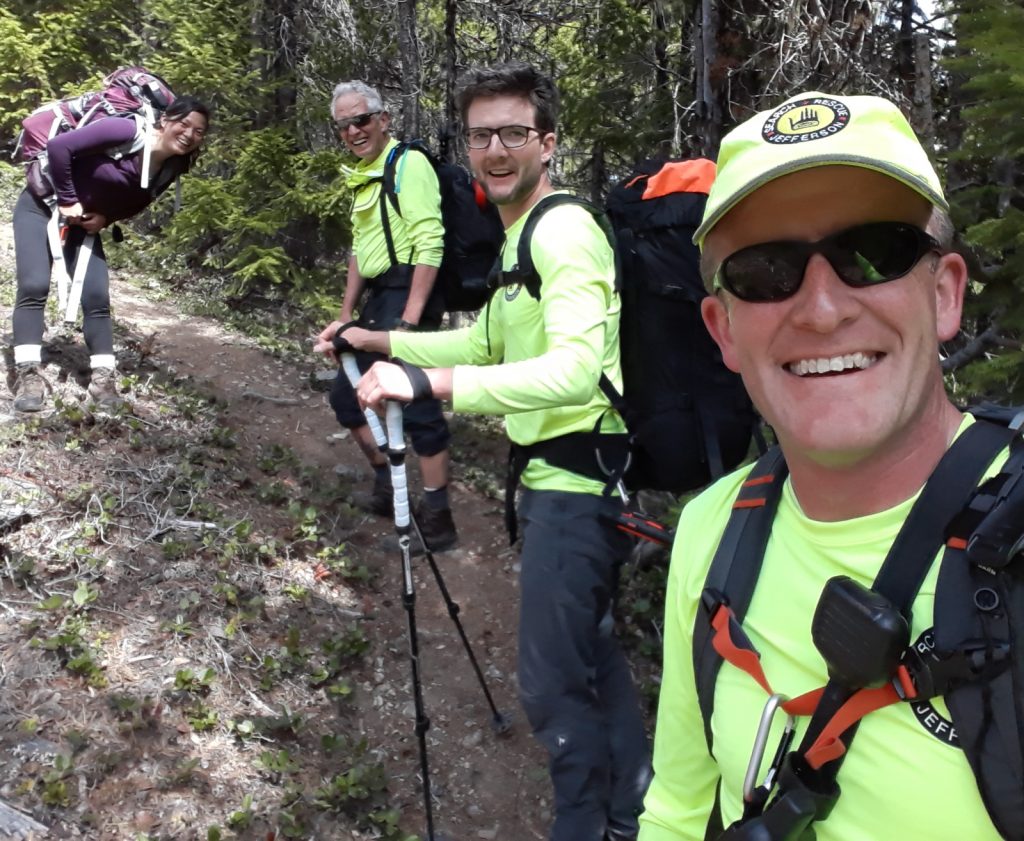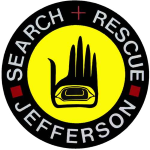State law and JSAR by-laws and procedures require training of all new volunteers to a basic level. Some of this training expires and must be renewed annually or occasionally, and much of the specialized training JSAR offers for topics like technical rescue goes beyond these basics.
Following is what a new member can expect to complete within the first year of working with JSAR.
1. Download and Complete Application Documents
Submit completed application documents to the membership chair (see the Contact page for details).
2. Obtain and Submit Additional Documentation
- Create a FEMA Student Identification account and complete these classes:
- NIMS IS-100 certificate of completion
- NIMS IS-200 certificate of completion
- NIMS IS-700 certificate of completion
- NIMS IS-800 certificate of completion
- Current first-aid certificate (standard or wilderness or higher certification)
- Current CPR certificate (lay or healthcare professional)
- Bloodborne pathogen training (attend annual JSAR class or watch video and pass test)
Submit training certificates to the training chair and the membership chair (see the Contact page for details).
3. Attend Annual Boot Camp for Basic Technical Training

- Legal issues (classroom)
- Radio communications (online training and online video)
- Basic and intermediate navigation (online training, more online training, and online video)
- Search safety (classroom or online video)
- Physical/mental fitness (classroom)
- Search techniques (classroom or online video)
- Crime scene and evidence/clue awareness (classroom)
- SAR ethics (classroom or online video)
- Social-media policy (classroom or online video)
- Demonstrate use of radio communications (field)
- Demonstrate GPS, map and compass navigational techniques (field)
- Discuss and demonstrate issues of physical/mental fitness and searcher safety (field)
- Demonstrate basic understanding of search techniques and ability to function in a search team (field)
- Demonstrate clue awareness (field)
- Patient packaging (field class)
- Discuss and demonstrate survival and shelter (field)
- Helicopter awareness (classroom or online training)
- Helicopter operations (field class)
- Rope rescue awareness (online training, more online training, and field class)
- Assemble complete 24-hour pack (inspection)

4. Choose Next Steps Depending on Your Interest
- Defensive-driving training and vehicle orientation
- Rope rescue operations
- Winter survival, snow travel
- Avalanche awareness and more advanced classes (outside training)
- Electronic search (ELT and Project Lifesaver)
- Swiftwater awareness
- Working with search dogs
- Tracking
- SARTopo mission mapping
- Critical Incident Stress Management (outside training)
- Wilderness First Aid or Wilderness First Responder
- Operations leader
- Emergency medical technician
- Amateur radio (outside training and testing)
- Additional online and classroom NIMS/ICS classes
- SARTECH certification (outside testing)
Download a Printable First-year Training Checklist
Use this two-page form to track progress toward completion of introductory training. Submit a copy of it periodically and when it is complete to the training chair (see the Contact page for details).
